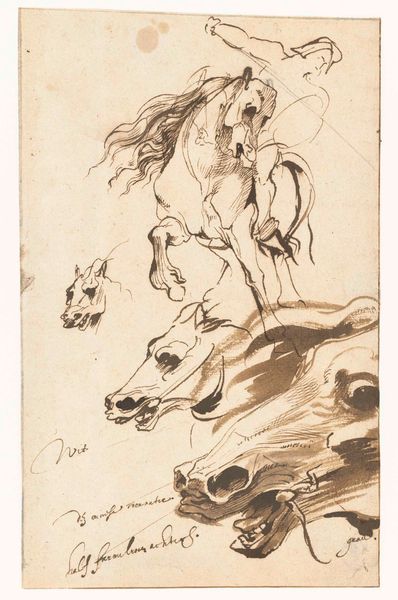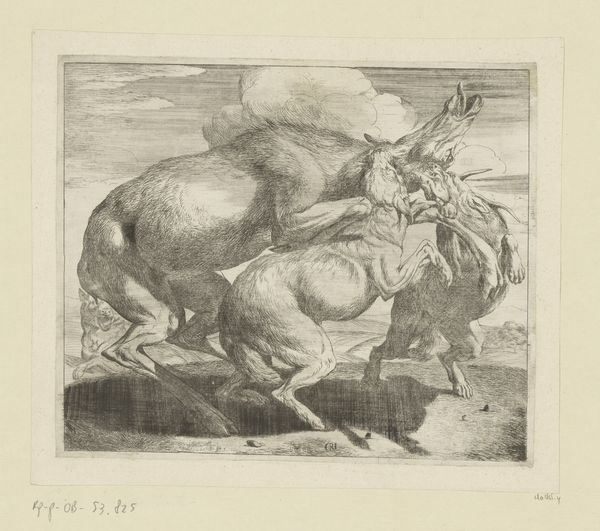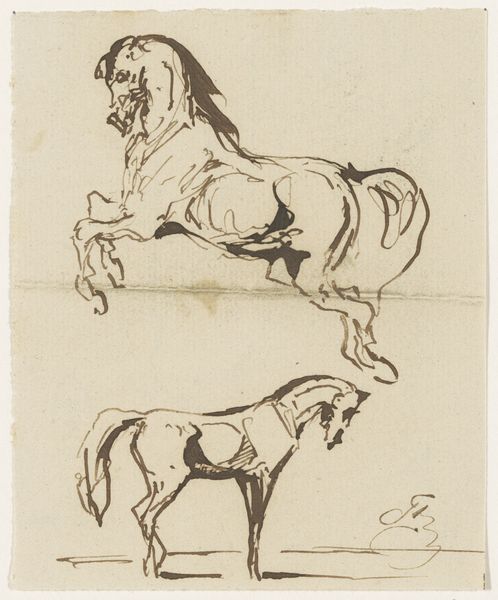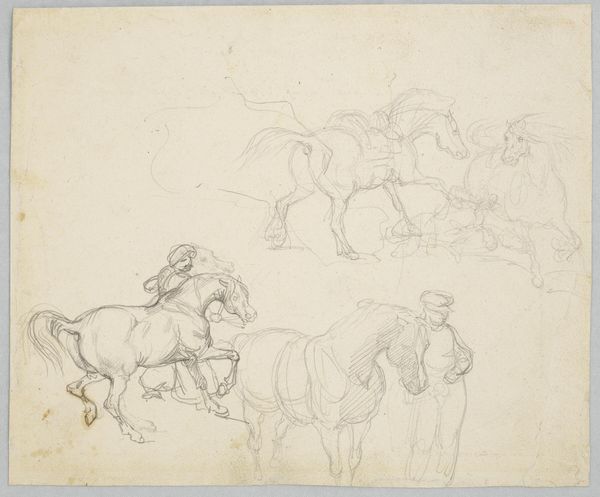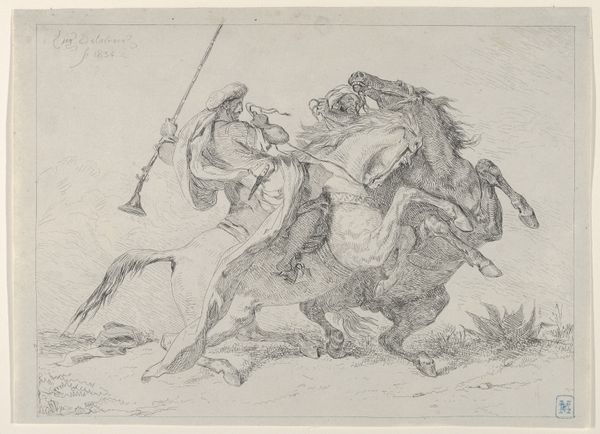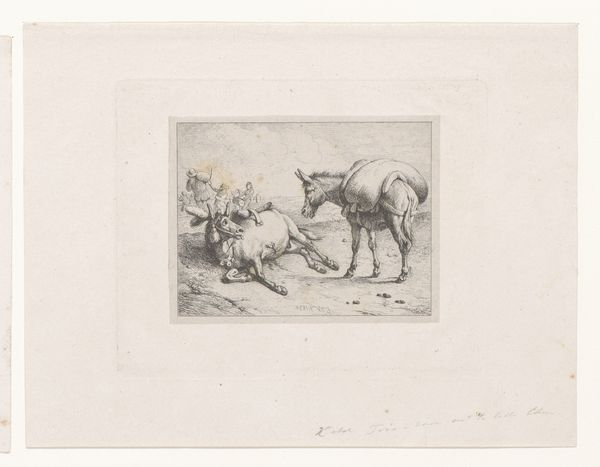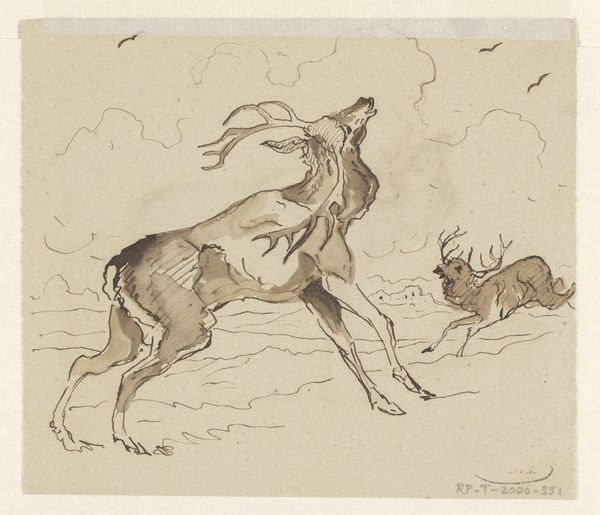
Study for -Stallion and Jack Fighting- c. 1932 - 1943
0:00
0:00
drawing, pencil
#
drawing
#
landscape
#
figuration
#
pencil
#
regionalism
#
realism
Dimensions: 17 7/8 x 23 13/16 in. (45.4 x 60.48 cm) (sheet)
Copyright: No Copyright - United States
John Steuart Curry made this drawing, a study for -Stallion and Jack Fighting-, with graphite on paper. Look at the energy in these marks! You can see how the artist is thinking through the motion, the struggle, making and remaking the lines, like a dance on paper. The texture comes from the sheer layering of graphite, the way Curry has built up tone and volume by hatching and cross-hatching, creating this dense, almost sculptural effect. See how the dark, smudged graphite around the horses' hooves gives a sense of the dust and churn of the fight. It's raw and immediate. The farmer with the pitchfork seems like an afterthought! You might compare this to some of George Bellows' boxing scenes, where a similar dynamism and immediacy is conveyed through expressive mark-making. But Curry's got a more down-home, midwestern feel, doesn't he? It all feels honest, like he is figuring it out as he goes, allowing for multiple readings and a beautiful sense of ambiguity.
Comments
minneapolisinstituteofart almost 2 years ago
⋮
John Steuart Curry was a leading figure among the Regionalists, artists who sought inspiration in rural America as an alternative to the urban centers of Europe. As part of his populist orientation, Curry often reiterated his painted subjects in lithographs printed in large editions and priced for middle-class consumption. In 1932, he painted Stallion and Jack Fighting, in which a powerful glistening horse tangles with a rawboned mule. At some point he decided that this subject would have wide appeal; so he set about reducing and refining the image, as we see in his drawing executed on tracing paper. He started with erasable pencil and then finalized his thoughts with ink. In 1943, he elaborated the image once again, drawing with a greasy crayon on a lithographic stone. The stone was then used to print the image, reversing the composition.
Join the conversation
Join millions of artists and users on Artera today and experience the ultimate creative platform.


